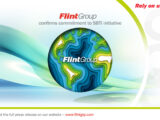Global flexible, mono-material, plastic-packaging film market to grow 4.5% CAGR to 2028: Smithers
April 23, 2023Global flexible, mono-material, plastic-packaging film is projected to be worth $55.7 billion in 2023, and will grow at a steady +4.1% compound annual growth rate (CAGR), globally. Central to future success in this segment is improving recyclability, replacing laminates and multilayer constructions with easier to recover mono-material designs.
Data from the latest market report from Smithers–The Future of Mono-Material vs. Multi-Material Packaging to 2028– addresses this challenge directly. It shows that in 2023, total consumption of mono-material, plastic-packaging films will reach 24.0 million tonnes of material. Demand by volume will increase at a 4.5% CAGR to reach 30.0 million tonnes in 2028. Across the same period, volume demand for multi-material packaging will increase at a slower 3.6% CAGR, driving consumption from 10.4 million tonnes (2023) to 12.4 million tonnes (2028).
The report’s expert analysis tracks the current state-of-the-art in mono-material flexibles design to identify which segments have the highest commercial potential. The principal technical challenges are to match the barrier performance and heat sealing of established multilayer designs, delivering comparable shelf-life and protecting against spoilage. Out of 11 end-use applications examined in Smithers’ analysis, pharmaceuticals, personal-care, and fresh food are forecasted to see the highest gains for mono-materials over the next five years (above).
Multiple manufacturers have successfully introduced higher barrier mono-material packaging substrates. These have already achieved good traction in dehydrated foods, detergents, and dry pet food; barrier performance still needs to be refined to see better penetration into remaining segments, like liquid foods. The same operators are making iterative improvements in heat sealing of mono-material films to match the seal integrity and throughput of multi-material packs on high-speed filling lines.
Polypropylene (PP) is the largest plastic type used for mono-material plastic polymer film, followed by polyethylene (PE). PVC and regenerated cellulose fibre (RCF) each account for very low market shares. PP mono-material packaging films are forecast to grow at the fastest rate, ahead of PE. One major advantage for PP is that it can be laminated with a PE film, and still be accepted as recyclable; as both are polyolefins.
Pressure for more sustainability in plastics is greatest in Europe, but many brand owners are galvanising the market, with commitments to make all their packaging recyclable, worldwide. This is manifesting in multiple new design for recycling initiatives – profiled in this report. The ultimate goal is to create a circular economy for flexible plastics, with discarded pouches, sachets and films creating the feedstock for a new generation of packaging. This requires investment from plastic producers, closed loop collection schemes for consumer packs are already in operation, creating a nascent supply of recycled PP and PE for real-world trials. True volume, however, will come from the commercialization of chemical (advanced) recycling, which also promises to provide rPP and rPE grades suitable for food contact.

